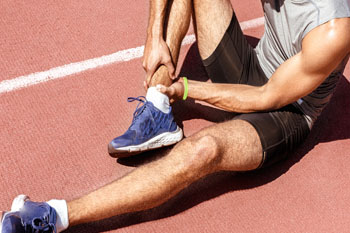
As with any sporting activity, it’s very important to be aware of the safety precautions needed to help avoid injury and reduce risk. With that being said, injuries of the foot and ankle are fairly common among those who actively participate in sports.
Some sports may be considered more dangerous in terms of foot and ankle injuries compared to others. These sports may include basketball, running, football, soccer, and dancing. Sports that require tightly worn shoes as well as have a particular focus on jumping typically run a higher risk of injury. Because the feet are considered the foundation of the body, help us stay balanced, and enable us to perform our everyday activities, professional help should be sought at the first instinct of something gone wrong.
Some common contributors that lead to foot and ankle injuries in the realm of sports include not stretching properly or failing to warm up, wearing the incorrect footwear needed for your particular sport, as well as not taping or providing your feet and ankle with the needed support. There are a number of foot conditions that can develop if certain safety measures are ignored. Some of the most common conditions related to sports injuries include Achilles tendinitis, plantar fasciitis, and stress fractures, to name a few.
Achilles tendinitis affects the largest tendon in the body, the Achilles tendon. This type of injury typically occurs because of overuse. The main function of the Achilles tendon is to transmit power from the calf muscles to the heel and the foot. When this tendon is harmed, it can be extremely painful and may lead to further complications including tears, ruptures, tendinitis, peritendinitis, tendinosis, tendinopathy, and bursitis.
Plantar fasciitis may occur when the band of tissues that support the arch of your foot experience too much stress. These tissues can become strained from frequently performing sporting activities, thus causing inflammation and pain at the bottom of the heel.
Stress fractures can arise due to a lack of conditioning, use of improper equipment or technique, and repetitive stress placed on the foot and ankle. A stress fracture is a small crack in the bone that can be very painful and cause a great deal of discomfort.
If you commonly participate in sporting activities and would like more information about how to keep your feet and ankles safe, as well as learn more about your treatment options if injured, we recommend you speak with a podiatrist for professional guidance and care.
